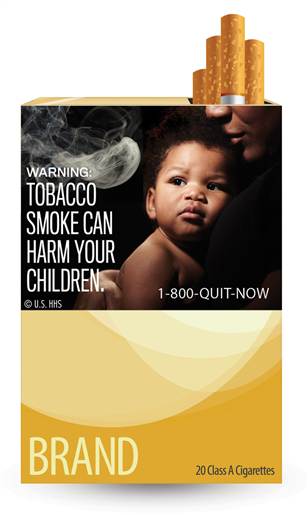A picture is worth a thousand words: UNC finds images on cigarette packs warn more effectively than text
May 6, 2015
Pictures illustrating the dangers of cigarette smoking were more effective at strengthening people’s intentions to quit smoking than text warnings, a University of North Carolina at Chapel Hill analysis of multiple research studies has found.
The results, published May 6 in the journal Tobacco Control, follow growth in the use of picture-based cigarette health warnings worldwide since their first use in Canada in 2001 and could help inform U.S. policy, said Seth M. Noar, PhD, professor in the UNC School of Journalism and Mass Communication and member of the UNC Lineberger Comprehensive Cancer Center.
UNC Gillings School of Global Public Health co-authors are Noel T. Brewer, PhD, associate professor of health behavior and co-principal investigator for a grant funding the research; Marissa G. Hall, doctoral student in health behavior; Kurt M. Ribisl, PhD, professor of health behavior; and Jessica K. Pepper, PhD, alumna and postdoctoral fellow in health behavior. Ribisl is program leader for UNC Lineberger’s Cancer Prevention and Control Program, and Brewer is a UNC Lineberger member.
The analysis that synthesized the results of 37 different experiments comparing picture-based and text warnings also found that the pictorial warnings held people’s attention longer, evoked stronger emotional reactions, and had a bigger impact on attitudes about smoking. In total, the analysis found that picture-based warnings were more effective than text warnings on 20 of 25 different outcome measures.
In response to requirements of a 2009 federal law, the U.S. Food and Drug Administration (FDA) issued a rule in 2011 requiring cigarette packs sold in the United States to include color graphic images aimed at depicting the negative health effects of smoking cigarettes along with one of nine new text warnings. The U.S. Court of Appeals for the District of Columbia Circuit, in response to a legal challenge from tobacco companies, prevented from moving forward the specific graphic warnings selected by the FDA, but the agency is expected to try again to comply with the law.
“We found that pictorial warnings are much more effective than text warnings,” Noar said. “This has important implications for what policy the United States should implement.”

This is one of nine images — and among the least graphic — FDA has proposed to include on cigarette packaging.
The analysis synthesized results of 37 experiments that had tested the impact of picture-based versus text warnings. The studies were conducted in 16 different countries and included 33,613 people, ranging from smokers to non-smokers, adolescents to adults. The UNC-led analysis offered a comprehensive look at the findings of a range of studies, Noar said.
Overall, across the set of studies, the researchers found strong evidence for the effectiveness of picture-based over text warnings. Pictorial warnings had a bigger impact on 20 outcome measures — including increasing intentions not to start smoking, intentions to quit smoking, getting and keeping people’s attention, triggering people to think about the negative impacts of smoking, and credibility.
“Pictorial warnings made people look at smoking in a more negative way and increased their intentions to quit smoking,” Noar said. “This is very important, as these variables are associated with later attempts to quit smoking.”
The analysis also found four measures for which there was no advantage or disadvantage to pictorial warnings over text, including measures of self-efficacy to quit smoking and warning recall. They also found one measure that favored text warnings over pictorial – the study found that pictorial warnings triggered more psychological reactance than text warnings. In short, that measure gauged whether participants felt irritated or annoyed by the pictorial warnings.
Most studies included in the UNC analysis did not evaluate the impact of pictorial warnings on actual behavior. The researchers call for more examination of the effects of pictorial warnings on smoking behavior as part of controlled experiments.
“This literature has not yet answered the question of whether pictorial warnings get people to stop smoking,” he said. “We need more studies that follow people over time to get a better understanding of the extent to which pictorial warnings do or do not change actual smoking behavior.”
Diane B. Francis, doctoral candidate at the UNC School of Journalism and Mass Communication, is also a co-author.
The study was supported by funding from National Cancer Institute and the U.S. Food and Drug Administration Center for Tobacco Products. It also was supported by 4CNC: Moving Evidence into Action and the UNC School of Journalism and Mass Communication.
Share
Gillings School of Global Public Health contact: David Pesci, director of communications, (919) 962-2600 or dpesci@unc.edu.




